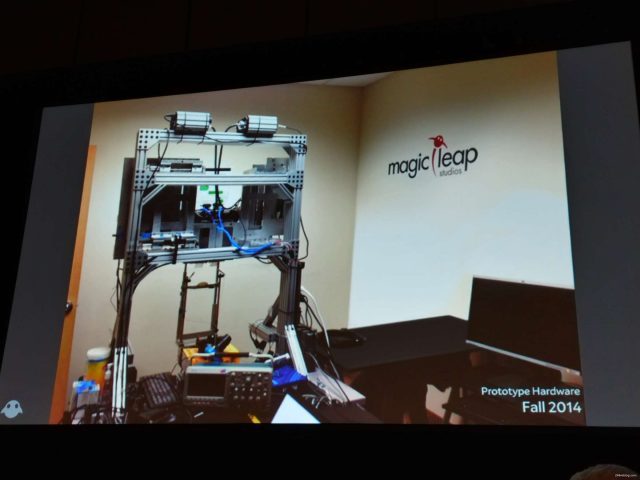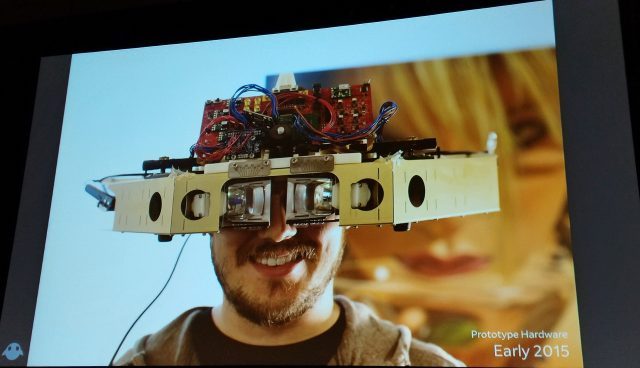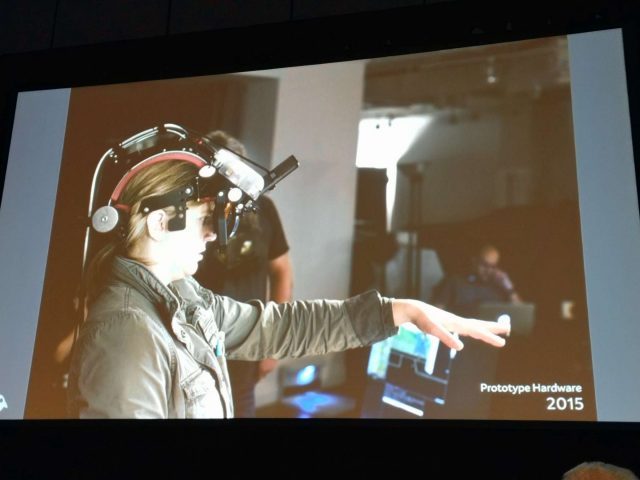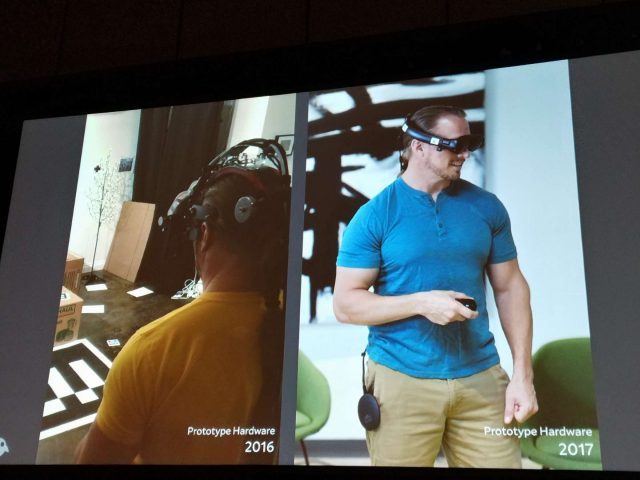At a sponsored GDC 2018 session, the still mysterious augmented reality company Magic Leap has revealed how their prototype hardware has evolved from 2014 to present day.
Slowly but surely, the famously secretive augmented reality company, is opening the shutters and letting the public see what they’ve been up to since the company was formed back in 2010.
At a GDC 2018 session called “The World is Your Playground: Deep Dive on Developing for Spatial Computing”, the company introduced the audience to the evolution of their prototype hardware illustrating just how far they’ve come.
One image which has been seen publicly acutely demonstrates the scale of miniaturisation that has taken place since the early days. Director of Interaction Lab at Magic Leap Brian Schwab introduced The Big Bench (below), a very early prototype Magic Leap device: “It was all basically like a Chevy 350 so you could swap parts and iterate.”

Schwab continues, introducing a technically ‘wearable’, albeit very uncomfortable looking prototype from 2015 (below), “This thing is called Cheese Head. The reason it’s so large is because the optics were huge and you need to keep them rigid.”

“This is what we called the WD3, we also had the V1, and the WD1, and WD2, then we had this thing. This was one of the first ones that what actually wearable.” The WD3 from 2015 is pictured below.

And finally, there’s quite a jump here as we see a shot of the WD3 prototype juxtaposed with the Magic Leap One prototype headset, as revealed back in December last year.

Magic Leap Specs and ‘Lumin’ SDK details that are known thus far:
- Head tracking
- Eye tracking
- Gesture and hand tracking
- Room scanning and meshing
- Spatialized audio
- Microphone input
- 6DOF hand controller (Totem) tracking
- Vulkan and OpenGL support
- Use of Unreal Engine 4’s desktop and mobile forward rendering paths







